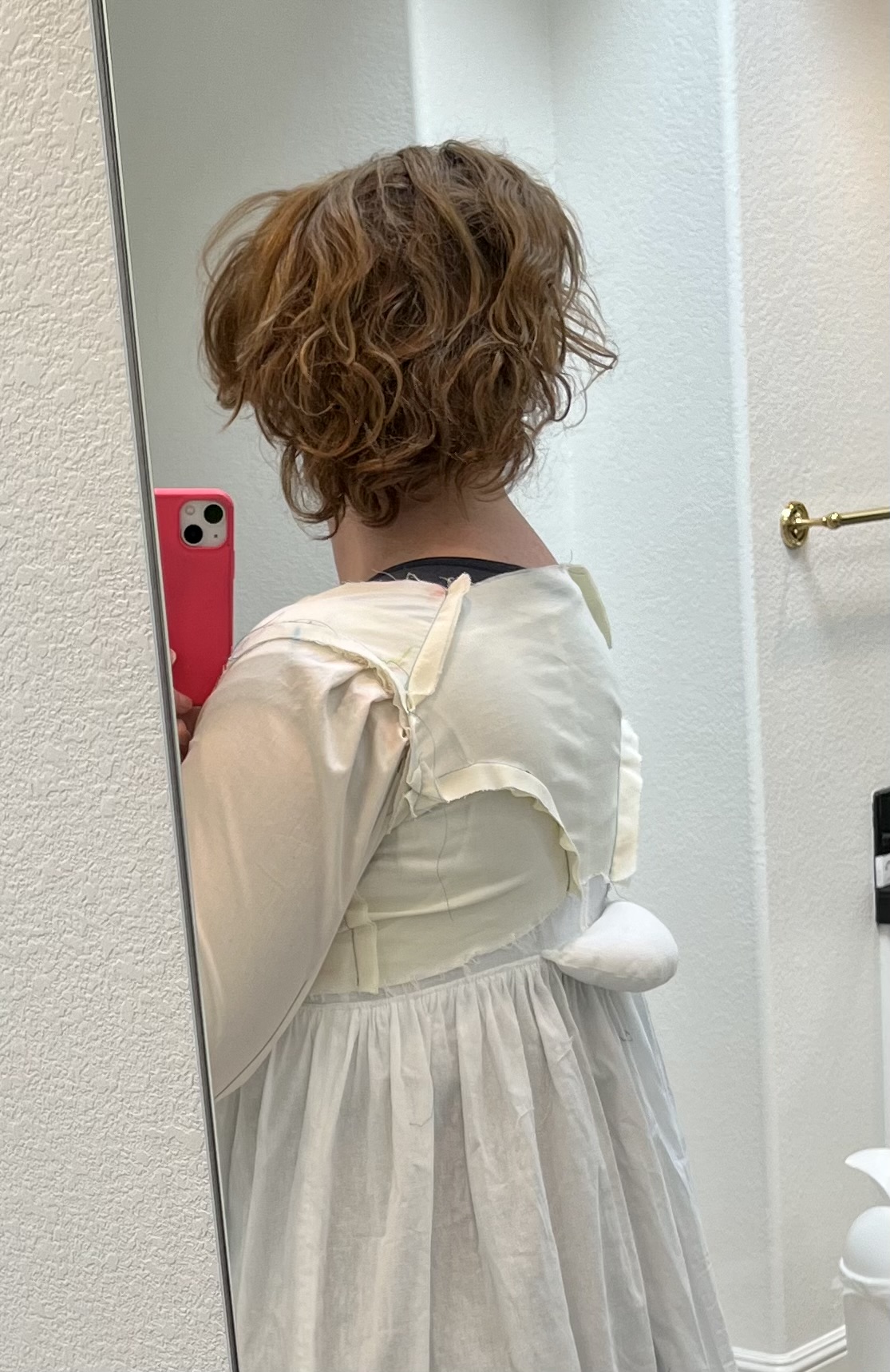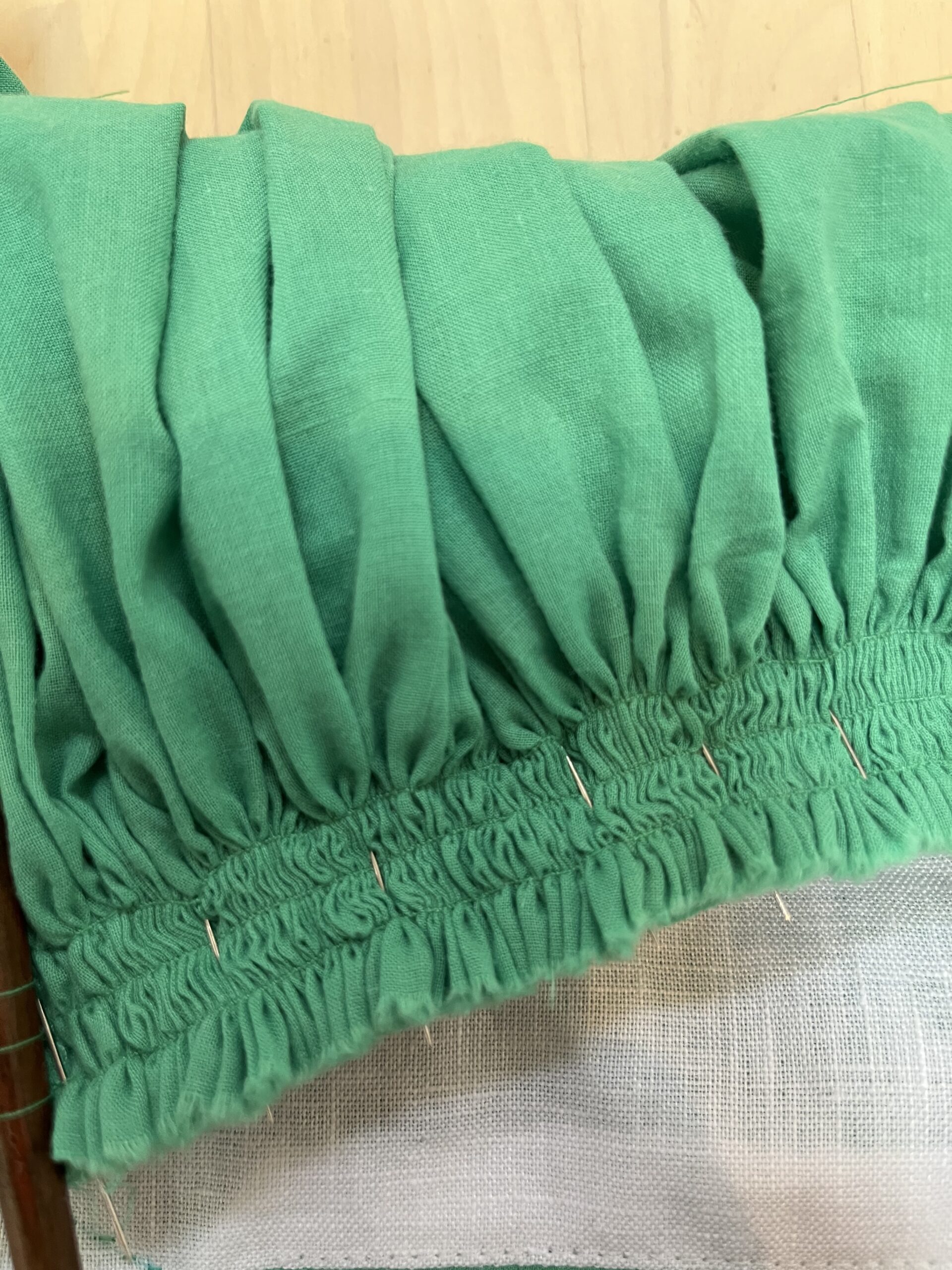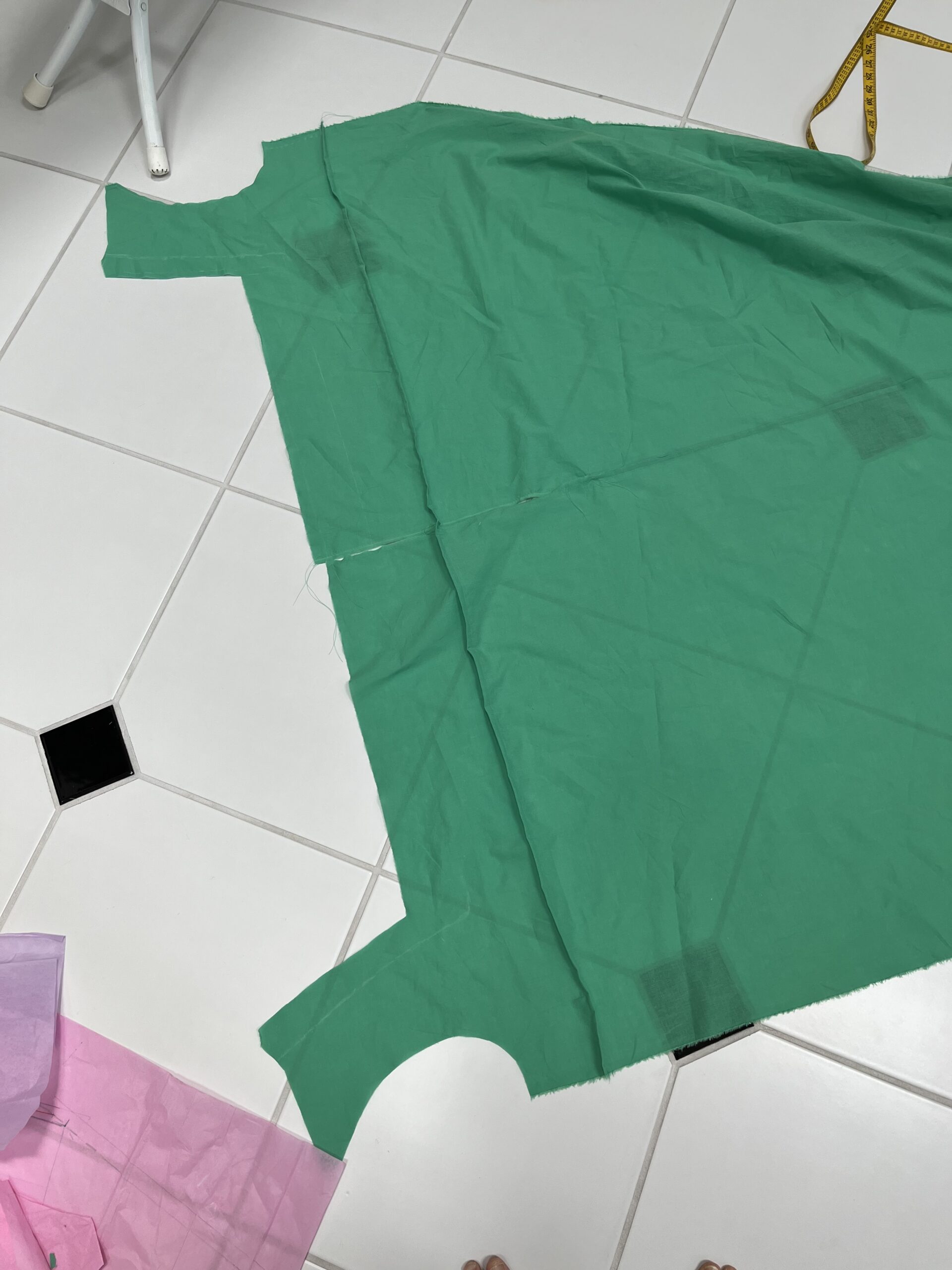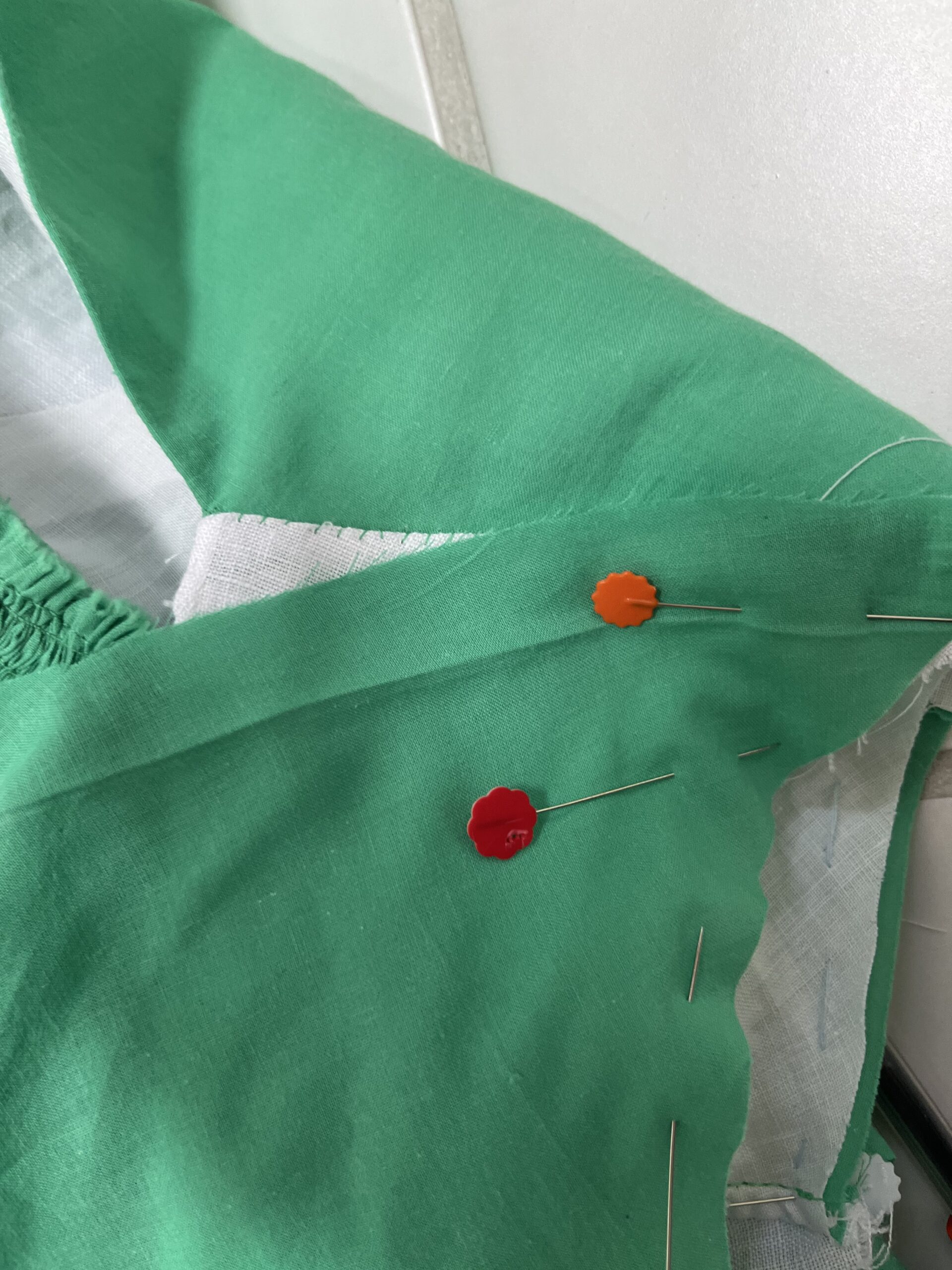The Green Blob, my late 1790s round gown is a mashup between the American Duchess dressmaking book, the American Duchess Simplicity pattern, and self-draped fussing. In this post I’ll talk about the construction of the gown. It’s not a definitive way, or an only way, but it is a valid way, and one that worked very well for me! Let’s have at it!
I had a lot of excellent initial help from my Mother-in-law fitting the bodice, but after that it was down to me, and fitting a back by yourself without a mannequin take AGES. It involves an awful lot of lacing up your stays, wrestling into your mockup, twisting around sideways in front of the mirror and stabbing at your back with a pencil, then wresting out of your mockup, making optimistic guesses about what your pencil marks mean, discovering your stay laces came undone, and RE-lacing your stays, wrestling into an altered mockup, squinting at yourself sideways in the mirror, stabbing at your back with a pencil –
-and doing it OVER and OVER again.

Gown construction, a mixture of machine and hand-sewing, was reasonably straightforward. I sewed the back layers separately – fashion fabric and lining, then pressed both, laid them wrong sides together, and stitched both to the front lining at shoulders and side seams.

I intended to cut the front bodice and skirts as one, so setting that fabric aside, I sewed the back skirt to the back bodice.
When i sew gathers on a machine, I like to sew three row of gathering stitches:
I mark a starting line perpendicular to the edge of the fabric, so that each row starts as close to level with the others as possible, and then I stitch – One row just INSIDE the stitching line, a second row about half-way between the first line and the edge of the fabric, and a third row the same distance OUTSIDE the first gathering row.

This technique keeps the gathers tight and parallel as you sew, and on fine, tight fabric like this voile, it can give a pretty good machine-sewn facsimile of stroked gathers!

Back skirts attached, I moved on to the fronts.

It’s not that the bodice was so very small – it’s that the fabric was so very large. Which was a good thing – the nasty stripes of bleach were able to vanish into seams and tucks and where they twisted sideways onto open fabric, be lost in the great green mass of gathering that was this very silly gown.
To cut the front – I laid the bodice lining pattern over the fabric, and extended the front neckline out to the edge of the fashion fabric panel. After cutting, I sewed a 1/4 inch tuck for the a drawstring channel.

I left the machine threads unknotted at Center Front so that I could hem the front opening later on. For my next gown I’ll hem the center front BEFORE I sew the tuck, but at the time I still hadn’t settled my final neckline, and I was feeling iffy about hemming anything in that region.
After I’d sewn the channel, I sewed the front of the gown to the back. This is where things got a bit iffy and not-quite-well-thought out. I folded the seam allowances of the front at the side bodice and the shoulders, and whipped them down from the outside.
Then, I lined up the skirt fronts against the skirt back and machine stitched them. This involved a certain amount of fiddling and hand-picking in the last inch or so below the point where the skirts met the bodice, but it worked out and from the outside, looks very neat and clean.
One thing that did NOT work out was the shoulder seam. The bodice lining was cut on the bias, but the fashion fabric was cut on the straight. Bias stretches, straight does not, and when I lined the two up, there was a gap where the fashion fabric did not come up high enough.

Fortunately, piecing is period – and a wedge of green voile (remembering to keep the fabric grains consistent!) filled in the gap nicely!

